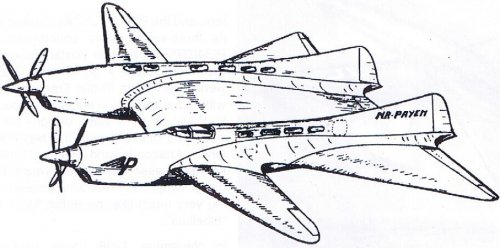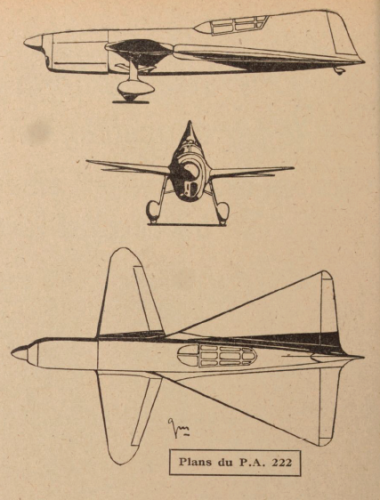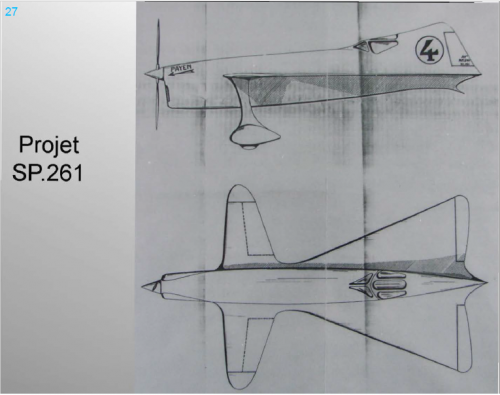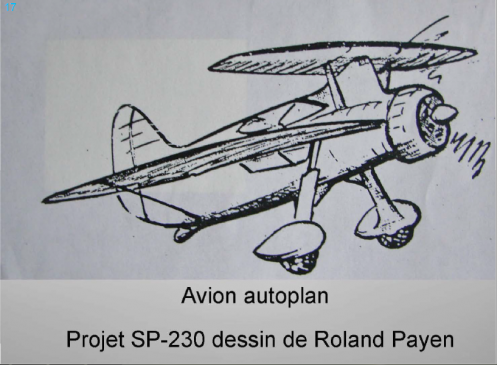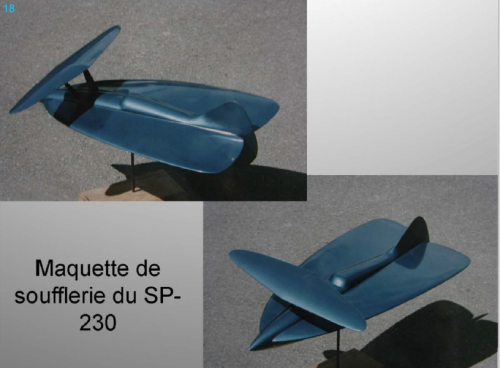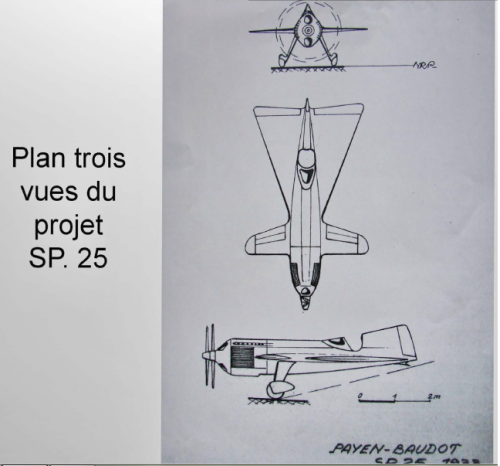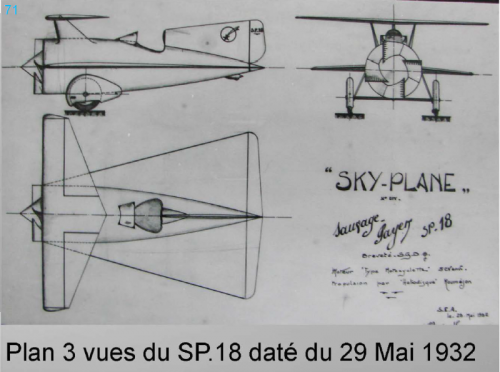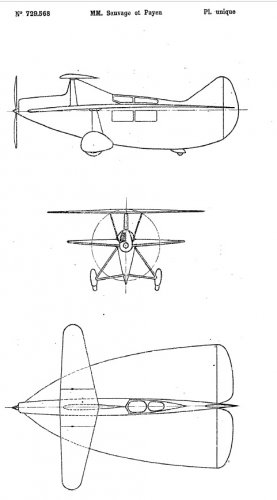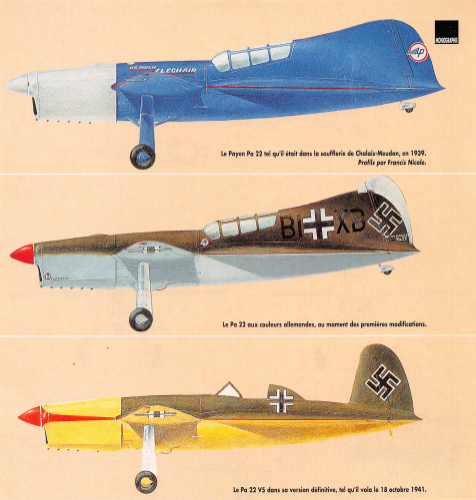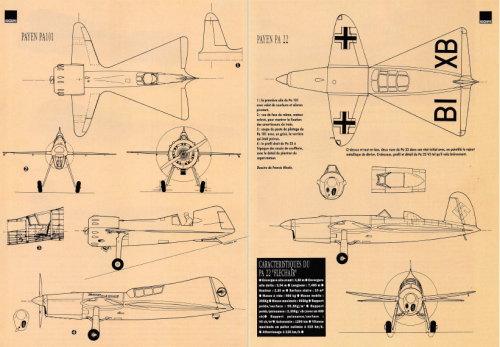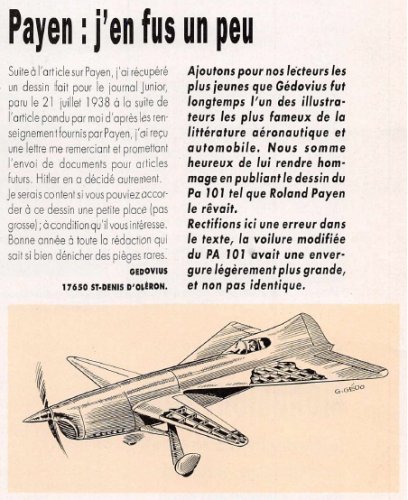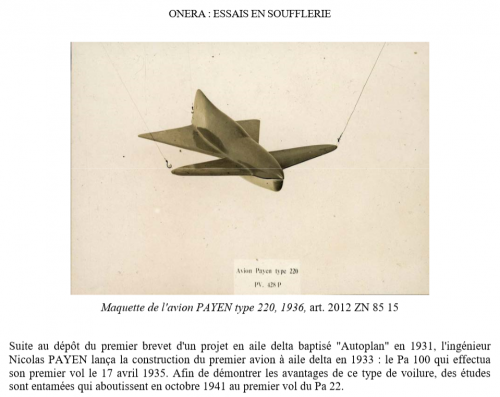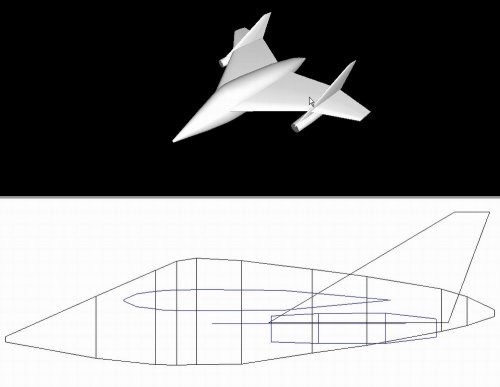You are using an out of date browser. It may not display this or other websites correctly.
You should upgrade or use an alternative browser.
You should upgrade or use an alternative browser.
Roland Payen projects and prototypes
- Thread starter Jemiba
- Start date
- Joined
- 28 January 2008
- Messages
- 635
- Reaction score
- 511
I found this two page Payen article in the July 1943 issue of L'Air (No 532) .
My French is poor so no translation, but there are details and illustrations of the Pa.100, Pa.22, Pa.222 and Pa.361. The written detail focuses on the last two types.
My French is poor so no translation, but there are details and illustrations of the Pa.100, Pa.22, Pa.222 and Pa.361. The written detail focuses on the last two types.
Attachments
Deltafan
ACCESS: Top Secret
- Joined
- 8 May 2006
- Messages
- 1,697
- Reaction score
- 2,316
Thanks Cy-27.
I had a bad (and not complete) drawing of this (not, see below) "Pa.100".
As some names of Payen planes (and versions) changed with time, maybe in July 1943 the name of this modified Pa.100 was still Pa.100.
But later this plane was known as the Pa.101 (the modified Pa.100 with radial engine and "classical" undercarriage).
I had a bad (and not complete) drawing of this (not, see below) "Pa.100".
As some names of Payen planes (and versions) changed with time, maybe in July 1943 the name of this modified Pa.100 was still Pa.100.
But later this plane was known as the Pa.101 (the modified Pa.100 with radial engine and "classical" undercarriage).
Avimimus
ACCESS: Top Secret
- Joined
- 15 December 2007
- Messages
- 2,426
- Reaction score
- 907
Cy-27 said:I found this two page Payen article in the July 1943 issue of L'Air (No 532) .
My French is poor so no translation, but there are details and illustrations of the Pa.100, Pa.22, Pa.222 and Pa.361. The written detail focuses on the last two types.
Thanks for posting that! I can now extract the basic information for the Payen 361:
Date: 1934
Empty: 3800 kg
Maxium: 10,000 kg
Range: 7000 km
Payload: 8 passengers, 500 kg mail, 560 kg of freight
Maximum speed: 580 km/h
Powerplant: 8xRégner 250CV (Driving four contra rotating props)
The power plant system using eight engines and four transmissions was intended to provide redundancy when flying over the Atlantic. In addition, it was intended to be able to survive ditching and remain floating for a prolonged period of time at sea (presumably giving a chance for rescue). The land transport variant had a much simpler engine arrangement: 2xGnome Rhône 1000 CV
The empty weight is almost certainly quite over-optimistic - especially given the ditching requirements. I also wouldn't be surprised if there would've plenty of issues with the transmission and possibly cooling. Nevertheless it is a pretty remarkable design.
Unfortunately no dimensions were given in the article (which would make it harder to model even with the Payen Pa.360 three view as a reference).
Deltafan
ACCESS: Top Secret
- Joined
- 8 May 2006
- Messages
- 1,697
- Reaction score
- 2,316
Thanks for the job Hesham.hesham said:we can put it here.
- Joined
- 26 May 2006
- Messages
- 34,878
- Reaction score
- 15,743
Hi,
here is a report about Roland Payen Aircraft and Projects,
https://en.calameo.com/read/00511663328ce5a9c6142
here is a report about Roland Payen Aircraft and Projects,
https://en.calameo.com/read/00511663328ce5a9c6142
Attachments
-
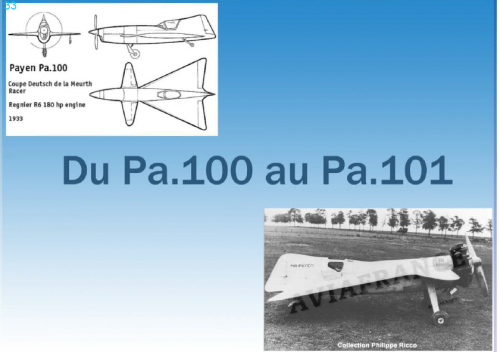 P-Pa.101.png220.7 KB · Views: 165
P-Pa.101.png220.7 KB · Views: 165 -
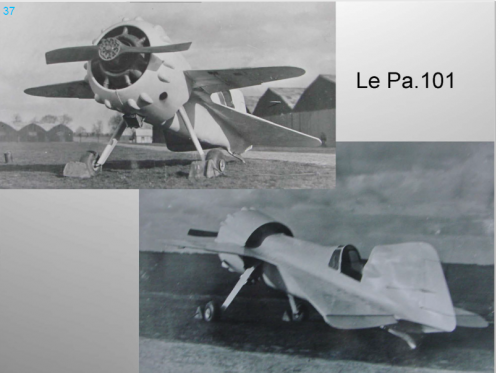 P-Pa.101 II.png573.7 KB · Views: 150
P-Pa.101 II.png573.7 KB · Views: 150 -
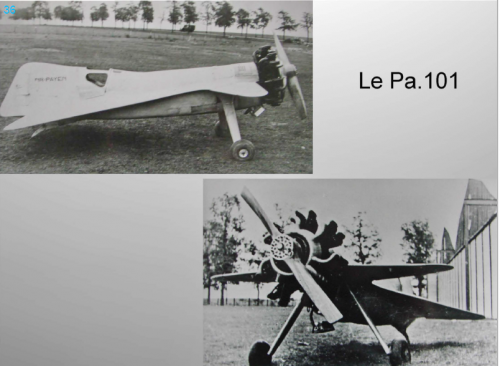 P-Pa.101 I.png530.7 KB · Views: 169
P-Pa.101 I.png530.7 KB · Views: 169 -
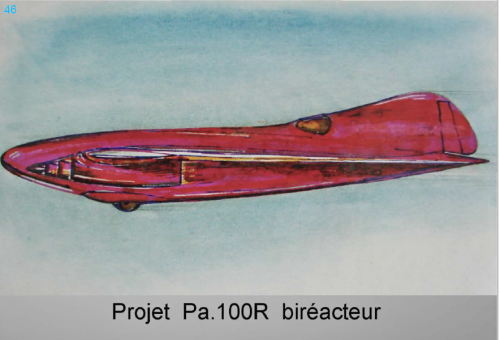 P-Pa.100R.png706.8 KB · Views: 182
P-Pa.100R.png706.8 KB · Views: 182 -
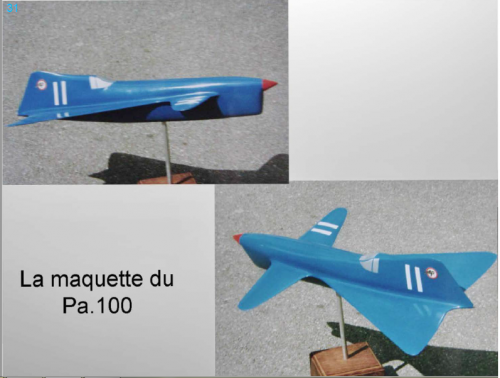 P-Pa.100 Model.png504.5 KB · Views: 176
P-Pa.100 Model.png504.5 KB · Views: 176 -
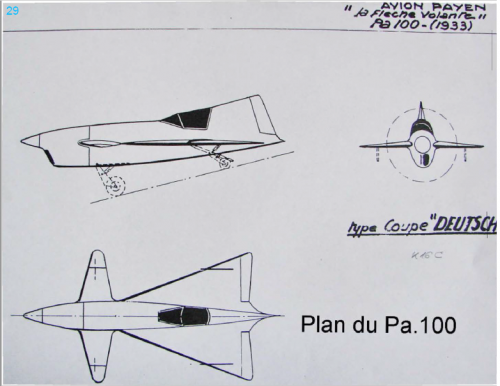 P-Pa.100.png415.1 KB · Views: 178
P-Pa.100.png415.1 KB · Views: 178 -
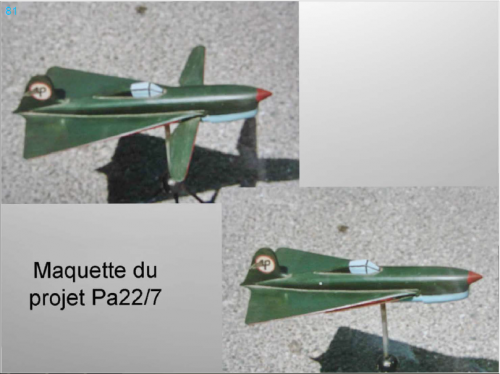 P-Pa.22-7.png544.2 KB · Views: 197
P-Pa.22-7.png544.2 KB · Views: 197 -
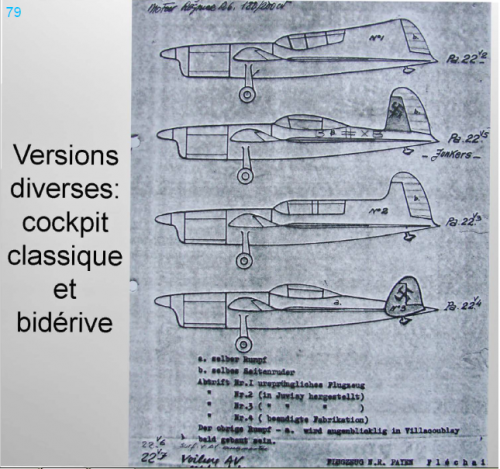 P-Pa.22 Versions.png673.5 KB · Views: 192
P-Pa.22 Versions.png673.5 KB · Views: 192 -
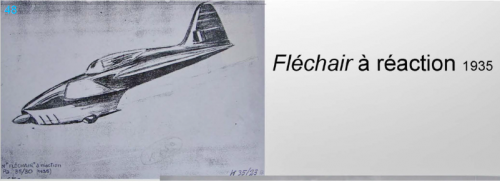 P-Flechair.png218.4 KB · Views: 178
P-Flechair.png218.4 KB · Views: 178 -
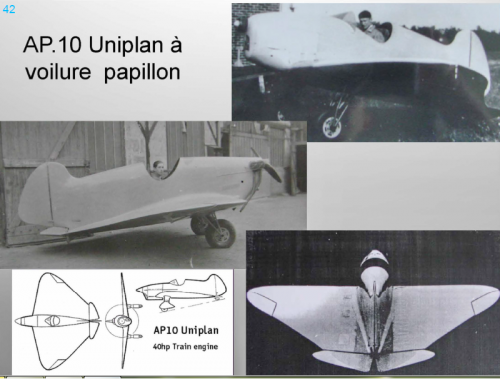 P-AP.10.png446.1 KB · Views: 247
P-AP.10.png446.1 KB · Views: 247
- Joined
- 26 May 2006
- Messages
- 34,878
- Reaction score
- 15,743
And;
Attachments
-
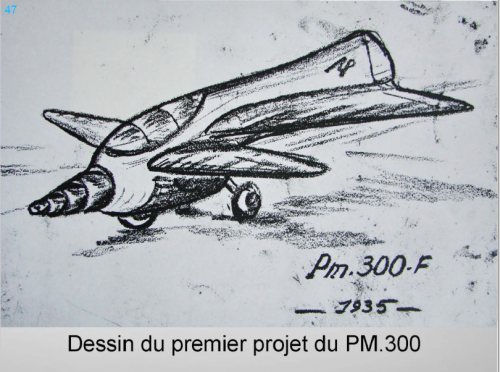 P-PM.300.png727.2 KB · Views: 171
P-PM.300.png727.2 KB · Views: 171 -
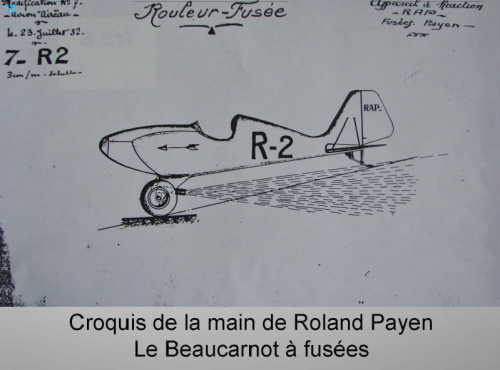 P-RAP.png463.7 KB · Views: 157
P-RAP.png463.7 KB · Views: 157 -
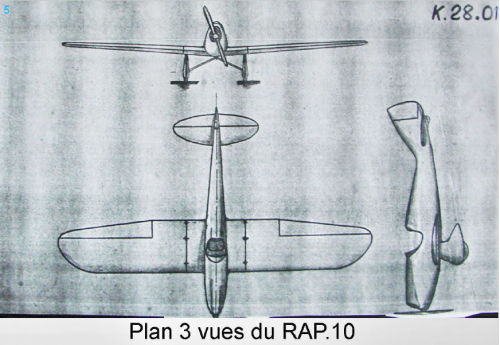 P-RAP-10.png837.5 KB · Views: 145
P-RAP-10.png837.5 KB · Views: 145 -
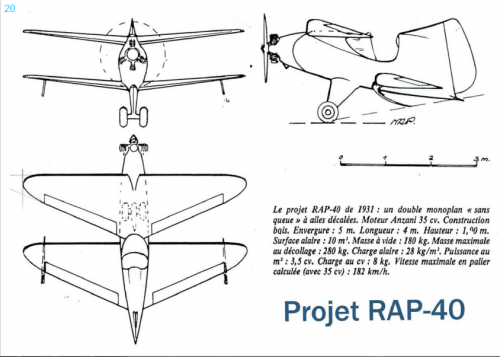 P-RAP-40.png264 KB · Views: 172
P-RAP-40.png264 KB · Views: 172 -
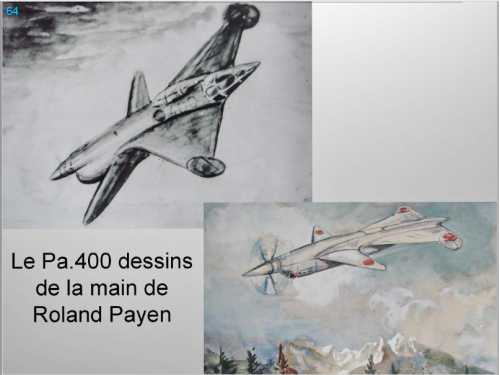 P-Pa.400 II.png556.9 KB · Views: 186
P-Pa.400 II.png556.9 KB · Views: 186 -
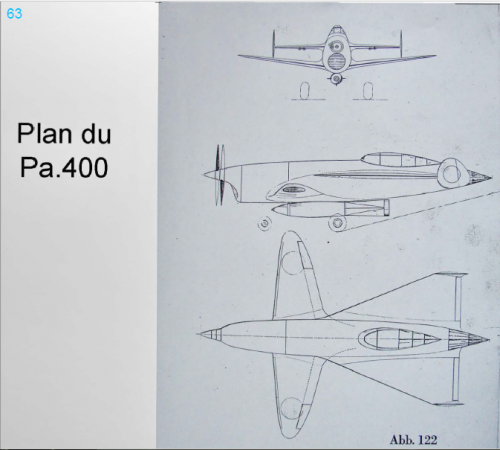 P-Pa.400.png347.2 KB · Views: 183
P-Pa.400.png347.2 KB · Views: 183 -
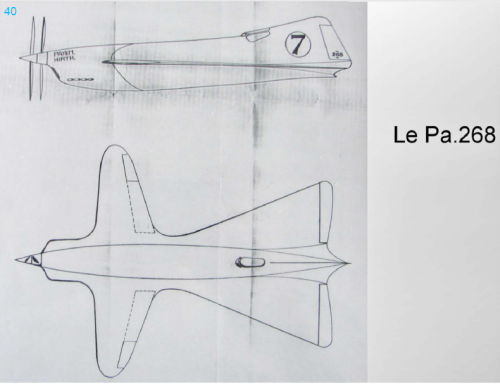 P-Pa.268.png362.3 KB · Views: 170
P-Pa.268.png362.3 KB · Views: 170 -
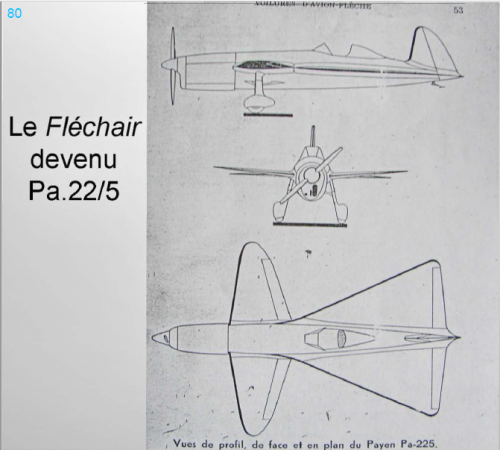 P-Pa.225.png352.5 KB · Views: 173
P-Pa.225.png352.5 KB · Views: 173 -
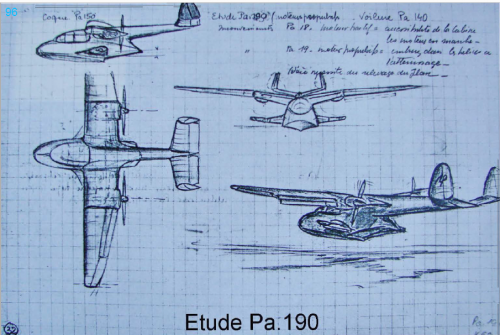 P-Pa.190.png976.1 KB · Views: 176
P-Pa.190.png976.1 KB · Views: 176 -
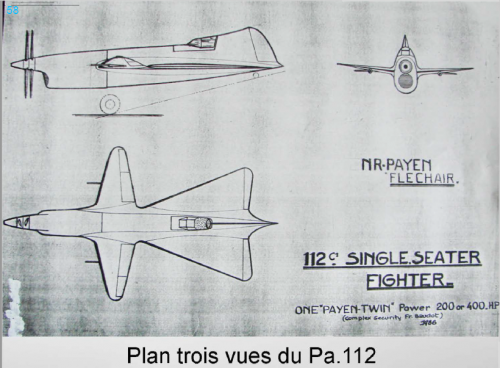 P-Pa.112.png702 KB · Views: 169
P-Pa.112.png702 KB · Views: 169
- Joined
- 26 May 2006
- Messages
- 34,878
- Reaction score
- 15,743
lark said:Very complete... thanks.
Thank you my dear Lark.
- Joined
- 26 May 2006
- Messages
- 34,878
- Reaction score
- 15,743
Skyblazer said:FANTASTIC!! More than I could ever hope to see...
Thank you my dear Skyblazer,
and generally I want to ask if the PM.300 was the same as PM.30 or not ?.
- Joined
- 3 September 2006
- Messages
- 1,474
- Reaction score
- 1,469
Surprising for 1935. What French jet engine would it use?hesham said:Here is a report about Roland Payen Aircraft and Projects,
https://en.calameo.com/read/00511663328ce5a9c6142

Deltafan
ACCESS: Top Secret
- Joined
- 8 May 2006
- Messages
- 1,697
- Reaction score
- 2,316
Thanks a lot Hesham !!!!!!!!
There are a lot of unknown photos, drawings and documents in this file !
It seems that it's a new version of the Conference near Paris that I reported here in 2014.
As the author is Pierre Gaillard we can also consider that the unknown photos, drawings and documents come from the book that was foreseen to be published 18 (!) years ago (script from Pierre Gaillard, Drawings from Jean Molveau and never published because the lack of a French publisher...).
Great Thanks once more again !
There are a lot of unknown photos, drawings and documents in this file !
It seems that it's a new version of the Conference near Paris that I reported here in 2014.
As the author is Pierre Gaillard we can also consider that the unknown photos, drawings and documents come from the book that was foreseen to be published 18 (!) years ago (script from Pierre Gaillard, Drawings from Jean Molveau and never published because the lack of a French publisher...).
Great Thanks once more again !
Deltafan
ACCESS: Top Secret
- Joined
- 8 May 2006
- Messages
- 1,697
- Reaction score
- 2,316
French early ramjet of Mr. Melot. It never worked...dan_inbox said:Surprising for 1935. What French jet engine would it use?hesham said:Here is a report about Roland Payen Aircraft and Projects,
https://en.calameo.com/read/00511663328ce5a9c6142

Deltafan
ACCESS: Top Secret
- Joined
- 8 May 2006
- Messages
- 1,697
- Reaction score
- 2,316
hesham said:and generally I want to ask if the PM.300 was the same as PM.30 or not ?.
It's difficult to be absolutely sure, as this "300.F" designation was unknown until now and as the "K" designation is lacking on the drawing. But visibly, this PM.300.F of 1935 seems to be an early design (and designation) of the PM.30A/K23B of 1935 (with the same Melot Ramjet too). It must be remembered too that Payen changed numerous designations of his planes over time.
maxmwill
I really should change my personal text
- Joined
- 29 October 2011
- Messages
- 60
- Reaction score
- 21
Thank you.
I've been having a few questions about a couple Payen designs, the 190 and 230, both battle field medevac aircraft, the 230 carrying one stretcher being the more realistic of the two designs.
I have both in the Unicraft resin models, and have been wondering if these could have been built and flyable?
Call it a minor morbid curiosity, and were I to work out a few numbers, perhaps the 190 could carry 4 stretchers, but then I was always the kind of person to root for the underdog.
I've been having a few questions about a couple Payen designs, the 190 and 230, both battle field medevac aircraft, the 230 carrying one stretcher being the more realistic of the two designs.
I have both in the Unicraft resin models, and have been wondering if these could have been built and flyable?
Call it a minor morbid curiosity, and were I to work out a few numbers, perhaps the 190 could carry 4 stretchers, but then I was always the kind of person to root for the underdog.
- Joined
- 3 September 2006
- Messages
- 1,474
- Reaction score
- 1,469
Merci!Deltafan said:French early ramjet of Mr. Melot. It never worked...
New to me, thanks Deltafan. Reading about the description here, it is not surprising it never worked.
1935! Payen was really a visionary...
Deltafan
ACCESS: Top Secret
- Joined
- 8 May 2006
- Messages
- 1,697
- Reaction score
- 2,316
The shape ("trumps") of the air intake is typical of the Melot early ramjet. No need of that for the other (even early) motorjets, turbojets, pulsejets or ramjets.hesham said:Thank you my dears,
and maybe the PM.300 was powered by a turbojet ?.
- Joined
- 26 May 2006
- Messages
- 34,878
- Reaction score
- 15,743
Deltafan said:The shape ("trumps") of the air intake is typical of the Melot early ramjet. No need of that for the other (even early) motorjets, turbojets, pulsejets or ramjets.hesham said:Thank you my dears,
and maybe the PM.300 was powered by a turbojet ?.
OK my dear Deltafan.
Deltafan
ACCESS: Top Secret
- Joined
- 8 May 2006
- Messages
- 1,697
- Reaction score
- 2,316
From the French author Philippe Ricco, on a French website. An unknown 3 views patent (November 1931) from a Sauvage-Payen that will be later the SP.230 project :
http://www.master194.com/forum/viewtopic.php?p=1311154#p1311154
http://www.master194.com/forum/viewtopic.php?p=1311154#p1311154
- Joined
- 26 May 2006
- Messages
- 34,878
- Reaction score
- 15,743
Deltafan said:Thanks for the sharing Hesham.
Thank you my dear Deltafan,
and from Le Fana 267.
Attachments
maxmwill
I really should change my personal text
- Joined
- 29 October 2011
- Messages
- 60
- Reaction score
- 21
Has anyone done any analysis on the SP 190 and SP230? While at first glance they look like they'd have to fall into the sky to fly, more and more I wonder if they might just have been reasonable flyers, if a tad squirrelly. Especially the 190 as a battlefiled medevac. B)
- Joined
- 26 May 2006
- Messages
- 34,878
- Reaction score
- 15,743
maxmwill said:Has anyone done any analysis on the SP 190 and SP230? While at first glance they look like they'd have to fall into the sky to fly, more and more I wonder if they might just have been reasonable flyers, if a tad squirrelly. Especially the 190 as a battlefiled medevac. B)
Good question.
maxmwill
I really should change my personal text
- Joined
- 29 October 2011
- Messages
- 60
- Reaction score
- 21
If it's such a good question, why hasn't anyone asked it until I just did?
There are aspects to the 190 that I'm curious about, such as two wheels per main landing gear side. And, as I have the Unicraft model(actually both the 230 and 190), where on the 190 was the radiator supposed to be mounted?
I know that the SP-190 was basically a paper plane(never left the drawing board), it does have the look of a potential successful flying machine, if only something of a squirrelly handful, but then, as a battlefield medevac, it'd have to be able to fly evasively when called upon to do so.
Besides which, I always had a very soft spot in my inner heart for such strange-looking beasties. I am even quite partial to the M-15 Belphegor. ; B)
There are aspects to the 190 that I'm curious about, such as two wheels per main landing gear side. And, as I have the Unicraft model(actually both the 230 and 190), where on the 190 was the radiator supposed to be mounted?
I know that the SP-190 was basically a paper plane(never left the drawing board), it does have the look of a potential successful flying machine, if only something of a squirrelly handful, but then, as a battlefield medevac, it'd have to be able to fly evasively when called upon to do so.
Besides which, I always had a very soft spot in my inner heart for such strange-looking beasties. I am even quite partial to the M-15 Belphegor. ; B)
Deltafan
ACCESS: Top Secret
- Joined
- 8 May 2006
- Messages
- 1,697
- Reaction score
- 2,316
maxmwill said:Has anyone done any analysis on the SP 190 and SP230? While at first glance they look like they'd have to fall into the sky to fly, more and more I wonder if they might just have been reasonable flyers, if a tad squirrelly. Especially the 190 as a battlefiled medevac. B)
The patent 729528 (inline engine), the SP.230 (radial engine), the SP.240 (radial engine) and the SP.190 (inline engine) where among the first drawings of M. Payen's projects (and among the first delta wings, or "ogival" wings in these cases, projects).maxmwill said:If it's such a good question, why hasn't anyone asked it until I just did?
(…)
where on the 190 was the radiator supposed to be mounted?
I know that the SP-190 was basically a paper plane(never left the drawing board), it does have the look of a potential successful flying machine, if only something of a squirrelly handful, but then, as a battlefield medevac, it'd have to be able to fly evasively when called upon to do so.
It's difficult to make a good answer for your questions. Some modern fans of Payen have built flying models to find answers for their own passions among the Payen's projects. But nobody made the three "ogival" SP or their patent as flying model yet.
For the radiator of the 190, there is nothing. But on the patent 729528 (inline engine too) we can see a radiator air intake on the upper right part of the engine. Surely, if there had been a development of the 190, there would have been an air intake somewhere around its engine. But today, we can only make assumptions... :-\
Deltafan
ACCESS: Top Secret
- Joined
- 8 May 2006
- Messages
- 1,697
- Reaction score
- 2,316
Hi,
On this french website we can find old files from the French Office ONERA (Office National d'Etudes et de Recherches Aérospatiales =
National Office for Aerospace Studies and Research) :
https://docplayer.fr/62076991-Onera-archives-des-essais-en-soufflerie.html
where I found this photo of a Payen model with the designation "220" (probably the SP.220), and a list of three Wind (model ?) tunnel planes that were studied by the ONERA (Pa.49) and, probably, the "Eiffel Laboratory" (the "220" in 1936 and another Payen without designation in 1935) :
On this french website we can find old files from the French Office ONERA (Office National d'Etudes et de Recherches Aérospatiales =
National Office for Aerospace Studies and Research) :
https://docplayer.fr/62076991-Onera-archives-des-essais-en-soufflerie.html
where I found this photo of a Payen model with the designation "220" (probably the SP.220), and a list of three Wind (model ?) tunnel planes that were studied by the ONERA (Pa.49) and, probably, the "Eiffel Laboratory" (the "220" in 1936 and another Payen without designation in 1935) :
Attachments
Very cool, Deltafan, thanks for sharing.
maxmwill
I really should change my personal text
- Joined
- 29 October 2011
- Messages
- 60
- Reaction score
- 21
Gentlemen, a question, and you'll have to pardon my bluntness. Has anyone taken any of Payen's paper designs such as the 240 and 190, and simply played with them with a 3d modelling program to guestimate just how the airframes might've been plausible? Yes, the Pa22 is really interesting because the bad guys got interested in it, but that's one type, and there were are few others before and since which have flown successfully, but there are the paper designs. Until rotary wings were adopted, battlefield flying ambulances were fixed wing aircraft converted from extant types. These two were more along the line of STOL, at least the potential was there. And resin models are nice, but computer modelling is a bit more accurate(and helpful for more realistic shiffing).
- Joined
- 11 March 2006
- Messages
- 8,625
- Reaction score
- 3,799
Not being an aerodynamicist, I can imagine, that the Payen layout would give similar characteristics to a
tandem wing design, so getting a bigger marging for the CG. And for a medevac aircraft, where two additional
passengers should have been transported horizontally, this could be an important feature, I think.
So I would regard the patents for the medevac designs rather as recommendation for a plausible use of his design,
than to be taken literally as a construction plan. If they could have achieved had STOL performance, I'm really not
sure, but the mentioned types with that feature were designed later, I think. Other contemporary designs probably
lack STOL performance, too:
https://www.secretprojects.co.uk/threads/latecoere-late-20-ambulance-airplane.28097/
https://www.secretprojects.co.uk/threads/delcourt-flying-ambulance.15318/#post-96932
"Medevac" probably wasn't meant back then to carry the wounded away directly from behind the front line !
About computer modelling, yes, it could be a way to determine, if a design is plausible at all. I just use it from
time to time to the proportions right of a design, I only know from a perspective view, like those drawn by
Roland Payen himself (attached example should represent the Pa.57). And yes, I sometimes had the feeling, that
his sketches somehow whitewashed his designs, often making them look more slender (e.g. the Pa.61). If another
view is available (in my example even the original flying hardware), I'm keeping to it, of course. If no other, more
plausible or realistic sources are available, I would keep to the available source, even if it is clear, that this design
would be less, than ideal, to say the least. Our definition for a "project" is, that it was drawn with the intention
to be built, or at least drawn for "serious" reasons. If it would have been workable, is another matter. I'm pretty sure,
if all projects, that would in reality never have been able to leave the ground in that guise, would be marked red here,
you could print out many sections and used them as a red flag ...
tandem wing design, so getting a bigger marging for the CG. And for a medevac aircraft, where two additional
passengers should have been transported horizontally, this could be an important feature, I think.
So I would regard the patents for the medevac designs rather as recommendation for a plausible use of his design,
than to be taken literally as a construction plan. If they could have achieved had STOL performance, I'm really not
sure, but the mentioned types with that feature were designed later, I think. Other contemporary designs probably
lack STOL performance, too:
https://www.secretprojects.co.uk/threads/latecoere-late-20-ambulance-airplane.28097/
https://www.secretprojects.co.uk/threads/delcourt-flying-ambulance.15318/#post-96932
"Medevac" probably wasn't meant back then to carry the wounded away directly from behind the front line !
About computer modelling, yes, it could be a way to determine, if a design is plausible at all. I just use it from
time to time to the proportions right of a design, I only know from a perspective view, like those drawn by
Roland Payen himself (attached example should represent the Pa.57). And yes, I sometimes had the feeling, that
his sketches somehow whitewashed his designs, often making them look more slender (e.g. the Pa.61). If another
view is available (in my example even the original flying hardware), I'm keeping to it, of course. If no other, more
plausible or realistic sources are available, I would keep to the available source, even if it is clear, that this design
would be less, than ideal, to say the least. Our definition for a "project" is, that it was drawn with the intention
to be built, or at least drawn for "serious" reasons. If it would have been workable, is another matter. I'm pretty sure,
if all projects, that would in reality never have been able to leave the ground in that guise, would be marked red here,
you could print out many sections and used them as a red flag ...
Attachments
Deltafan
ACCESS: Top Secret
- Joined
- 8 May 2006
- Messages
- 1,697
- Reaction score
- 2,316
Hi everybody,
Help wanted !
The link of the November 1934 italian video of the Payen Pa.101 is dead
I could not find it again on the WWW
If anyone can find it again, he will be the best forumer of the Universe
Help wanted !
The link of the November 1934 italian video of the Payen Pa.101 is dead
Enjoy !!!!!!!!!! ;D
Embedded media from this media site is no longer available
I could not find it again on the WWW
If anyone can find it again, he will be the best forumer of the Universe
Last edited:
Deltafan
ACCESS: Top Secret
- Joined
- 8 May 2006
- Messages
- 1,697
- Reaction score
- 2,316
Hi,
a link with a lot of articles, drawings and photos of Payen planes/projects from :
-Pilote privé n°83, December 1980
-Pilote privé n°84, January 1981
-Pilote privé n°85, February 1981
-Pilote privé n°86, March 1981
-Pilote privé n°87, April 1981
-Pilote privé n°88, May 1981
-Pilote privé n°89, Juny 1981
-Aviasport April 1995
I give the other issues (on the same link) on the topic of the postwar Payen projects.
a link with a lot of articles, drawings and photos of Payen planes/projects from :
-Pilote privé n°83, December 1980
-Pilote privé n°84, January 1981
-Pilote privé n°85, February 1981
-Pilote privé n°86, March 1981
-Pilote privé n°87, April 1981
-Pilote privé n°88, May 1981
-Pilote privé n°89, Juny 1981
-Aviasport April 1995
I give the other issues (on the same link) on the topic of the postwar Payen projects.
Last edited:
Similar threads
-
Arsenal de l'aéronautique: built prototypes and unbuilt projects
- Started by Jemiba
- Replies: 96
-
-
Loire and Loire-Nieuport Projects & Prototypes
- Started by hesham
- Replies: 102
-
-
Little-Known French Projects and Prototypes
- Started by hesham
- Replies: 746

